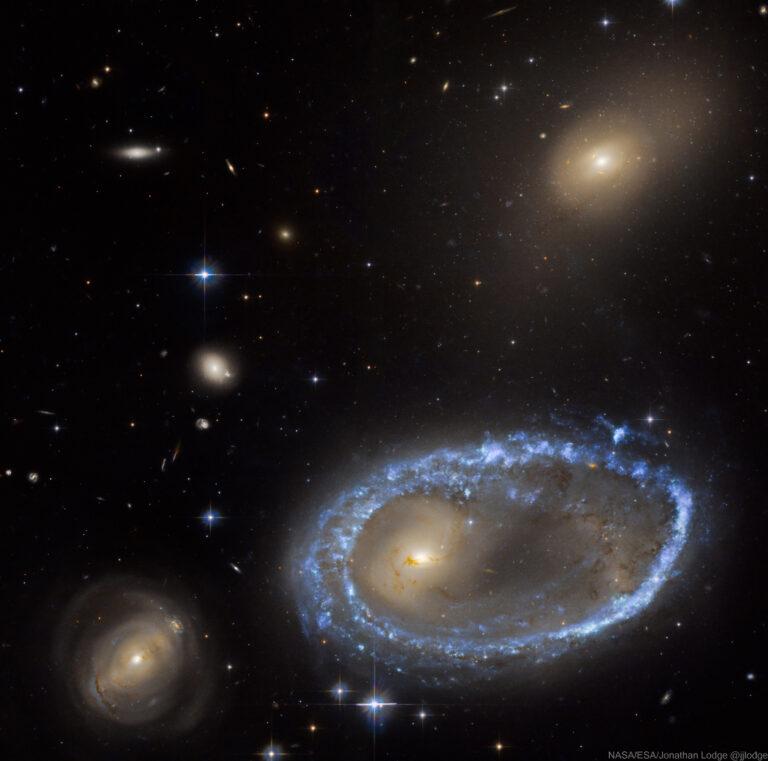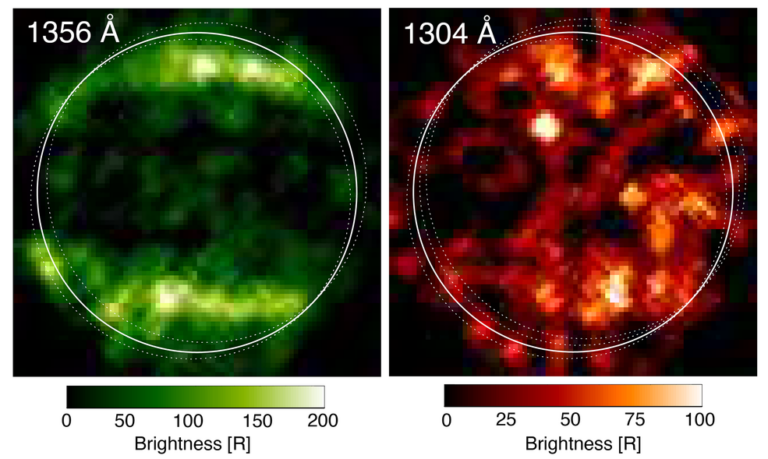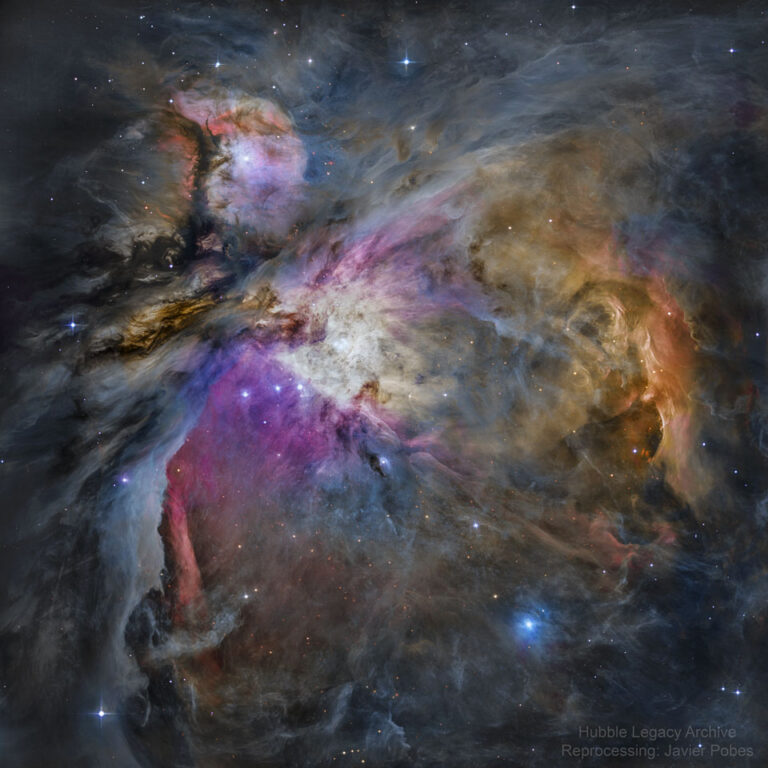哈勃望远镜探测到危险的舞蹈
This NASA/ESA Hubble Space Telescope image features two interacting galaxies that are so intertwined, they have a collective name – Arp 91. Their delicate galactic dance takes place more than 100 million light-years from Earth. The two galaxies comprising Arp 91 have their own names: the lower galaxy, which looks like a bright spot, is NGC 5953, and the oval-shaped galaxy to the upper right is NGC 5954. In reality, both of them are spiral galaxies, but their shapes appear very different because of their orientation with respect to Earth. 这张NASA/ESA哈勃太空望远镜的图片展示了两个相互作用的星系,它们交织在一起,有一个共同的名字——Arp 91。它们微妙的星系之舞发生在距离地球1亿多光年的地方。组成Arp 91的两个星系都有自己的名字:下面的星系,看起来像一个亮点,是NGC 5953,右上方的椭圆形星系是NGC 5954。实际上,这两个星系都是螺旋星系,但是由于它们相对于地球的方向不同,因此它们的形状看起来非常不同。 Arp 91 provides a particularly vivid example of galactic interaction. NGC 5953 is clearly tugging at NGC 5954, which looks like it is extending one spiral arm downward. The immense…










